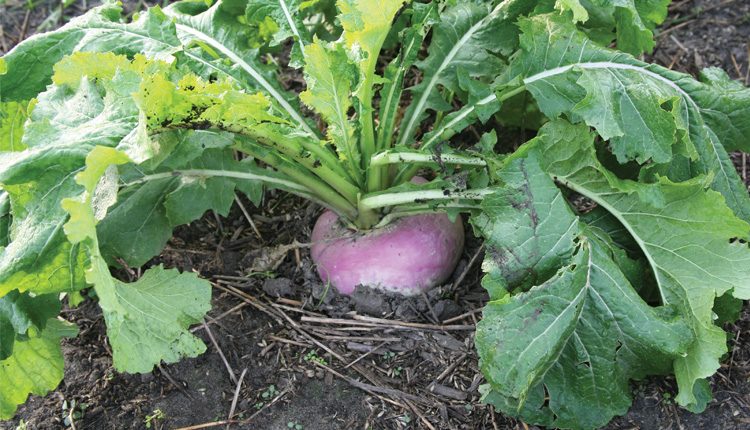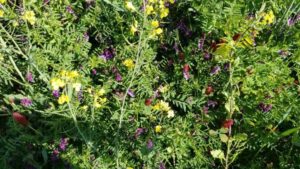Retailers and agronomists have an important role to play in helping farmers understand how to fit cover crops into their rotations.
Reducing soil erosion, bulking up organic matter, tamping down weeds — the benefits of cover crops continue to intrigue farmers, but weather and geography pose a challenge. In those areas of the country where snow follows soon after harvest, seeding a cover crop can be particularly difficult.
Experts agree uniform establishment is key to reaping those benefits. But with a short window in the fall for the planter to follow the combine, growers look to ensure their investment (both in time and product) doesn’t go to waste.
As with anything, jumping into cover crops starts with a good plan and that’s where agronomists and retailers can lend their expertise.
“It’s all about planning. It’s never too early to start thinking about next fall,” says Scott Wohltman, La Crosse Seed cover crops lead and agronomist. Headquartered in Wisconsin, La Crosse sells forage, turf and cover crop seed.
Dean Baas, an agriculture educator with Michigan State University Extension and member of the Midwest Cover Crops Council Executive Committee, adds that when you’re working with farmers on their primary seed selections, you should also be talking about how to incorporate a cover crop strategy into their planting intentions, taking the entire growing year into account.
It’s prudent to purchase that seed at the same time as corn and soybean seed, when a grower crunches numbers and considers what fields need, Baas says.
“The people who are committed to cover crops have made it part of their cropping system,” he shares. “It’s not one of those last-minute decisions. They’ve bought seed early and planned for cover crops in their fall field work.”
The other part, depending on the crop, is planning how a grower should deal with cover crops after they’ve done their job.
But Baas cautions that you, like farmers, don’t know what the spring weather holds; so having a back-up plan is a good idea.
You don’t want customers to be in a situation where they have shoulder-high cereal rye, Baas says, adding that they need options for dealing with out-of-the-ordinary situations. Don’t just assume they can get in the fields at the planned or ideal time — you’ve got to be thinking about options for cover crop termination.
What Can Go Wrong?
What’s lost if a cover crop attempt fails because of poor establishment in the fall? First and foremost, there’s little to no improvement in soil health. Any benefits derived from cover crops are related to growth, Baas says.
“Another potential issue is that cost share programs usually have requirements for reaching a certain percent of cover before they’ll pay,” he says. “They will come and inspect a field, and if those requirements haven’t been met, they won’t provide the funding.”
A failed attempt can turn farmers sour on the whole cover crop concept too. That’s why Baas says he and fellow Midwest Cover Crops Council members created the popular Cover Crop Decision Tool found on the council’s website (www.mccc.msu.edu) to help growers make the best choices for their operation.
“We’ve tried to end the recommended planting date for each crop, giving sufficient time to get enough growth so that the farmer should be happy with the results,” he says of the custom timelines that indicate when crops have the best chance for “reliable establishment” or there’s a “freeze risk to establishment.”
Examine the Whole Rotation
Considering early maturing varieties of row crops is one place to start, Baas says. The earlier cover crops can be seeded, the odds are better that it can get established before the weather induces dormancy.
If growers have to compromise on yield, it’s important to ask just how important the cover crop is to the overall system. If there are erosion problems or the customer is trying to build soil health, he or she may be willing to take a little bit of a hit on yields, he says.
How a grower intends to seed a cover crop is another important factor, Wohltman says.
“Short day bean varieties and corn hybrids are a good place to start, but you also need to consider the dry down characteristics because that’s different than maturity — those are two different things,” Wohltman says.
“When it comes to aerial application of cover crops, it makes sense to consider hybrids with a quicker dry down,” he says. “We also talk about plant architecture in corn and stature with beans. Some corn hybrids and soybean varieties tend to be more open while other options may be more upright. Row spacing is an obvious factor too. These can make a difference.”
Wohltman says cover crop science is ever evolving and agronomists are constantly learning more about what it takes to achieve a good stand. Recent results indicate that moisture is key to getting aerial applications off to a good start and crops such as radishes and legumes need between 700 and 800 growing degree days to reach their full potential.
“Inoculating legumes is really important too — it makes a big difference in getting the seed out of the ground,” he says.
Resources Abound
There’s a plethora of good information and sources to rely on when helping farmers get started in cover crops.
Baas says all kinds of good information, specific to a grower’s region, can be obtained from Extension staff, local Natural Resources Conservation Service offices and conservation districts. But nothing beats connecting with fellow farmers who have experience.
Encourage them to find some farmers who are growing cover crops, Baas says.
“Often those who are using them and are successful with them are happy to talk to others,” he shares. “It goes a long ways to have someone to bounce ideas off. It’s kind of tough to jump into cover crops, even if you’ve read up on it.”
On-farm field days, such as the ones Michigan State University Extension regularly hosts with conservation districts and seed companies, are another great resource.
Wohltman says he refers many growers to the aforementioned Midwest Cover Crops Council decision tool. Getting suggestions customized to a farmer’s county is very valuable, he says.
La Crosse Seed also offers helpful information through their company’s mobile app. Soon, users will be able to access the company’s seed guide and decision tools complete with seeding rates, drill settings and more from their cell phone or other device.
“Some goals are easily noticed and well-defined, but improving soil health is a journey, not a destination,” he says. “It takes time to regenerate soils and it demands that producers ultimately consider long-term expectations, no matter their initial goals or objectives.”













